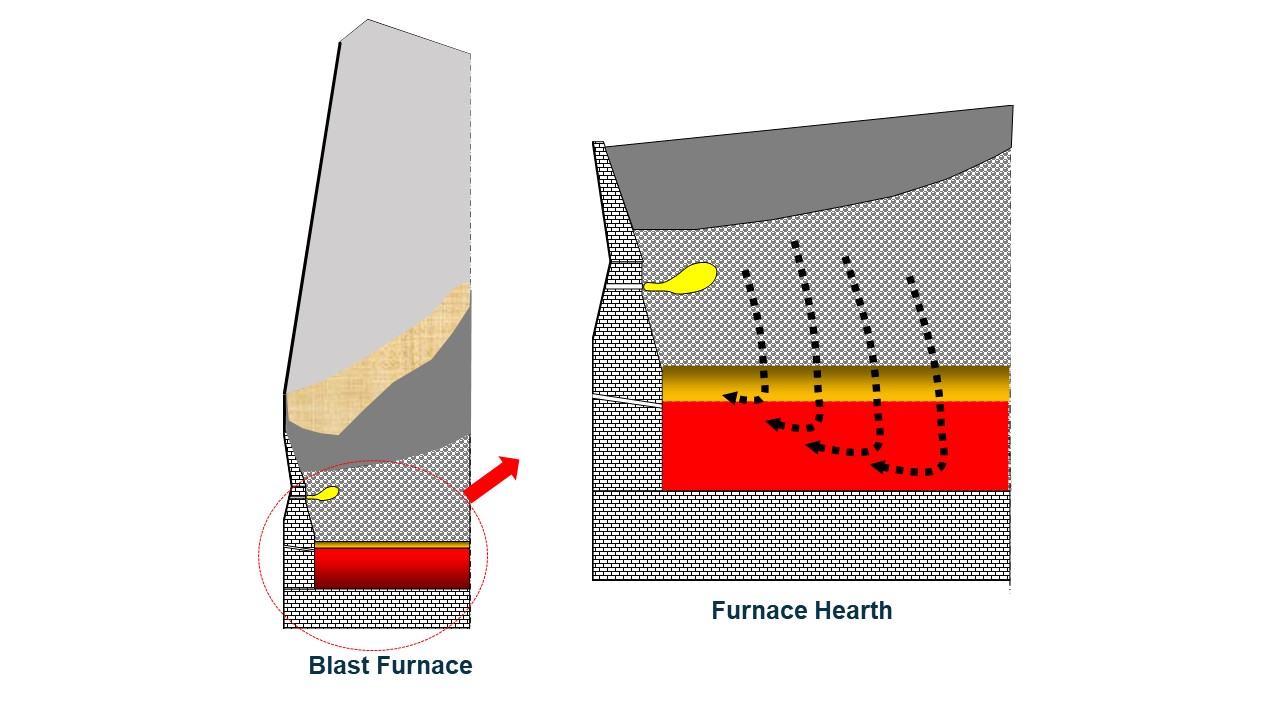November 30, 2021
Blast Furnace Hearth Sidewall and Taphole Numerical Investigation Project
Just four months young, the Steel Research Hub is well underway with another collaborative project commencing between the University of Wollongong and BlueScope Limited (BSL).
BSL is a world-leading provider of innovative steel materials, products, systems and technologies, headquartered in Australia with operations spread across Australia, North America, New Zealand, Pacific Islands and throughout Asia.
For BSL’s Port Kembla integrated steelworks, one unique challenge potentially affecting its steelmaking competitiveness and sustainability is the reliance on a single blast furnace (BF5) for the supply of liquid hot metal to downstream processes. Extending the life of capital-intensive assets like BF5 is therefore a key focus and so, novel ways to significantly increase furnace operational security and campaign life are sought.
The new project focuses on BF5 and specifically, the refractory-lined hearth. The project is titled “Numerical Investigation of Temperature Variations in Blast Furnace Hearth Sidewall and Taphole Refractories”. The project team consists of University of Wollongong’s Project Leader and Research Fellow, Dr Xuefeng Dong, Hub Director Dr Paul Zulli, and BlueScope’s Associate Researchers, Dr Habib Zughbi, Mark Biasutti and Dr Sheng Chew.
In general, it is very important to monitor the condition of all furnace areas and components over the campaign life, such as the installed refractories in the hearth. However, due to the extreme operating conditions within the furnace, direct physical in-situ measurements are often impossible or very difficult. In practice, indirect measurements are possible, e.g., on-line temperature measurements through an array of thermocouples installed in the hearth refractory lining. However, a holistic view of the hearth condition and operation can only be gained via the use of these types of data in conjunction with sophisticated mathematical modelling.
Some of the expected outcomes of this collaborative project are a novel conjugate fluid flow-heat transfer numerical model, together with models based on using data-intensive analytical methods and comprehensive BF measurements. The numerical model will use individual refractory blocks for the sidewalls and pad, constructed in a way that reflects the actual constituent blocks in size and material. The introduction of a slag layer above the molten metal and a taphole assembly/pedestal will provide more flexibility in setting up more realistic scenarios.
Overall, the team aims to provide the technological capability to better assess refractory condition and hence, inform on alternate operational and engineering actions required for BF5’s life extension.
